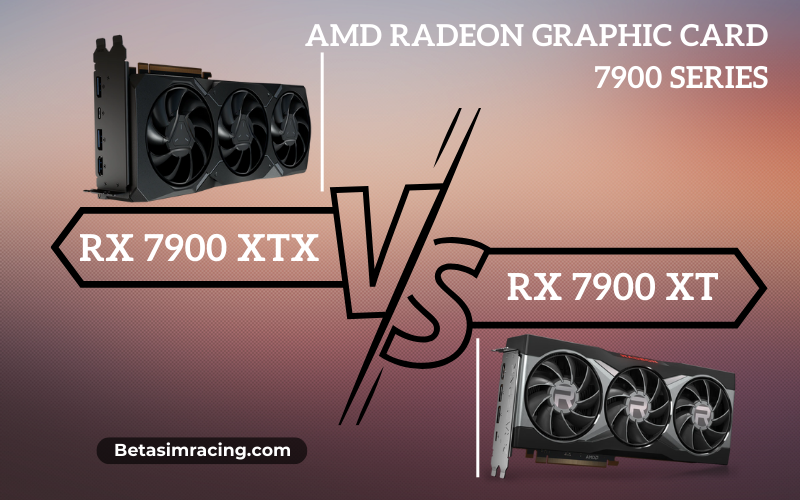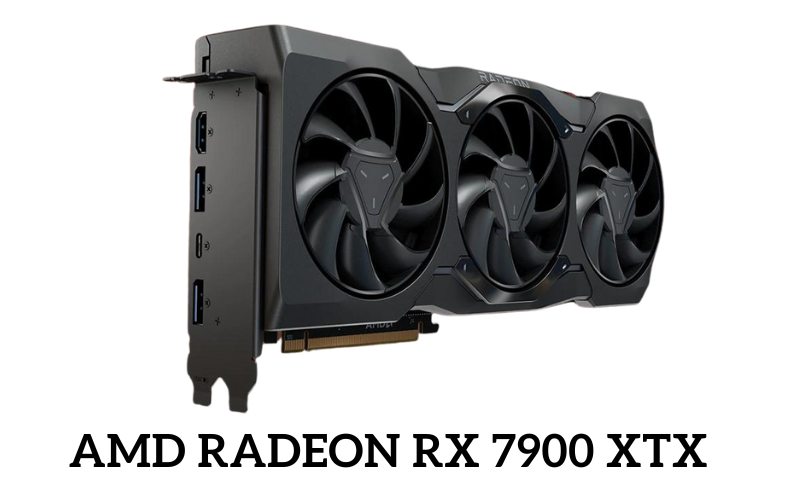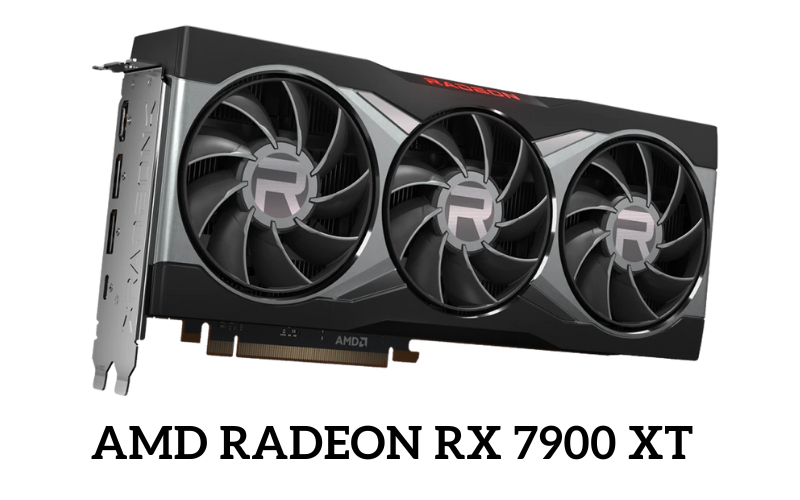Since its launch, the AMD Radeon RX 7900 XTX has been a significant player in the high-end graphics card market. Based on the innovative RDNA 3 architecture, it was the first consumer GPU to utilize a chiplet-based design, a strategic move by AMD to push performance and efficiency. This review provides a comprehensive, purely informational analysis of the RX 7900 XTX and its sibling, the RX 7900 XT, reflecting their standing, specifications, and performance in the current landscape.
This guide offers an objective look at the technology, performance metrics, and key features of these cards, helping users understand their capabilities for demanding gaming and creative workloads.
AMD Radeon RX 7900 XTX vs. RX 7900 XT: Specifications
For users evaluating their options, a direct comparison of specifications is crucial. The following table provides a detailed, at-a-glance overview of the key differences between the Radeon RX 7900 XTX and the RX 7900 XT.

| Feature | AMD Radeon RX 7900 XTX | AMD Radeon RX 7900 XT |
| GPU Architecture | RDNA 3 | RDNA 3 |
| GPU Core | Navi 31 | Navi 31 |
| Compute Units (CUs) | 96 | 84 |
| Stream Processors | 6144 | 5376 |
| Boost Clock | Up to 2500 MHz | Up to 2400 MHz |
| Game Clock | 2300 MHz | 2000 MHz |
| Ray Accelerators | 96 (2nd Gen) | 84 (2nd Gen) |
| Memory Size | 24 GB GDDR6 | 20 GB GDDR6 |
| Memory Interface | 384-bit | 320-bit |
| Memory Bandwidth | Up to 960 GB/s | Up to 800 GB/s |
| Infinity Cache | 96 MB (2nd Gen) | 80 MB (2nd Gen) |
| Total Board Power | 355W | 315W |
| Power Connectors | 2x 8-pin | 2x 8-pin |
| Display Outputs | DisplayPort 2.1, HDMI 2.1 | DisplayPort 2.1, HDMI 2.1 |
| Launch MSRP | $999 | $899 |
Architectural Innovation: The RDNA 3 Chiplet Design
The most significant architectural shift with the RDNA 3 series is its move away from a traditional monolithic die to a more advanced chiplet design. This approach separates the main processing unit from other components, allowing for a mix of manufacturing processes to optimize cost and performance. This is a complex topic, but understanding how it’s made helps in grasping its capabilities.
Graphics Compute Die (GCD)
At the heart of the Navi 31 GPU is the Graphics Compute Die. This is the central processing powerhouse, built on a cutting-edge 5nm process node. The GCD houses the core components responsible for raw graphical horsepower, including the stream processors, compute units, and the new 2nd generation Ray Accelerators. Using the 5nm process here allows for significant gains in performance and power efficiency where it matters most.
Memory Cache Die (MCD)
Surrounding the GCD are multiple Memory Cache Dies. These are built on a more mature and cost-effective 6nm process node. Each MCD contains a portion of the second-generation AMD Infinity Cache and the GDDR6 memory controllers. By separating these from the GCD, AMD can increase the memory bus width and cache size without the prohibitive cost of manufacturing a single, massive 5nm die. This design is critical to achieving the high memory bandwidth figures seen in both the XTX and XT models. For those building a new system, considering how this architecture pairs with your other components, such as the motherboard, is key. If you are unsure when you should upgrade your motherboard, it’s often when adopting new technologies like this.
AMD Radeon RX 7900 XTX: A Detailed Examination
The Radeon RX 7900 XTX stands as AMD’s flagship offering from this generation, designed to compete at the highest levels of PC gaming.

Core Specifications
The RX 7900 XTX is equipped with the full Navi 31 GPU, featuring 96 Compute Units, 6144 Stream Processors, and a substantial 24 GB of GDDR6 VRAM on a wide 384-bit memory bus. This large memory pool makes it exceptionally well-suited for gaming at 4K resolution with high-resolution textures and for memory-intensive creative applications.
2025 Performance Profile
The RX 7900 XTX remains a formidable graphics card, delivering exceptional rasterization performance.
- 4K Gaming: This is the primary domain of the RX 7900 XTX. It consistently delivers high frame rates in the latest titles at 4K resolution, often trading blows with its direct competitor, the NVIDIA GeForce RTX 4080, in traditional rendering.
- 1440p Gaming: For high-refresh-rate 1440p gaming, the card is more than capable, making it an excellent choice for competitive gamers who own a monitor with a high refresh rate.
- Ray Tracing: While RDNA 3 brought significant improvements in ray tracing, the RX 7900 XTX generally trails its direct NVIDIA competitors in this area. Performance is solid and playable in most titles, but enabling demanding ray-traced effects often requires the use of upscaling technologies like FSR to maintain smooth frame rates.
- Productivity: The 24 GB VRAM is a major asset for content creators working with 4K/8K video editing, complex 3D rendering, and large datasets.
AMD Radeon RX 7900 XT: A Comprehensive Look
Positioned just below the flagship, the Radeon RX 7900 XT is a slightly scaled-down version of the Navi 31 GPU, offering a compelling alternative for those who don’t require the absolute peak performance of the XTX.

Core Specifications
The RX 7900 XT features 84 Compute Units, 5376 Stream Processors, and 20 GB of GDDR6 VRAM across a 320-bit bus. The reduction in CUs and a narrower memory bus are the primary differentiators from its more powerful sibling.
2025 Performance Profile
The RX 7900 XT is a capable high-end GPU that offers a significant portion of the XTX’s performance at a lower price point.
- 4K Gaming: It is a strong 4K entry card, capable of running most modern games at this resolution with good settings. In some of the most demanding titles, users may need to adjust settings or utilize FSR for a consistent 60 FPS experience.
- 1440p Gaming: This resolution is the sweet spot for the RX 7900 XT. It excels here, providing very high frame rates, making it a perfect match for 1440p displays with refresh rates of 144Hz or higher.
- Ray Tracing: Similar to the XTX, its ray tracing performance is competent but not market-leading. It can handle ray-traced effects, especially when paired with FSR, but it is not its strongest feature compared to its rasterization prowess.
An In-Depth Look at Key RDNA 3 Technologies
Beyond raw horsepower, the RX 7900 series brings several key technological features to the table that are crucial to the user experience.
DisplayPort 2.1: Pioneering Future-Proof Connectivity
One of the standout features of the RX 7900 series is the inclusion of DisplayPort 2.1. This was a significant step forward, offering a massive increase in bandwidth over the previous DisplayPort 1.4 standard. This enables support for next-generation displays, including:
- 4K at 480Hz
- 8K at 165Hz
While monitors that can fully utilize this bandwidth are still emerging, it provides exceptional future-proofing for users investing in a high-end system. For those considering a new display, checking out options like the best Thunderbolt monitor can ensure you have the connectivity to match your GPU’s power.
AMD FidelityFX Super Resolution (FSR)
AMD’s answer to performance-boosting upscaling technology, FSR, is a critical component of the modern gaming experience. It renders games at a lower internal resolution and then uses advanced algorithms to upscale the image to the target resolution, significantly improving frame rates.
Expert Insight: FSR is an open-standard technology, meaning it can run on a wide range of GPUs, not just AMD’s. However, it is optimized for Radeon hardware. The latest iterations of FSR offer image quality that is highly competitive, making it a viable tool for enabling ray tracing or achieving higher frame rates.
2nd Generation Ray Tracing Acceleration
RDNA 3 includes AMD’s second-generation hardware for accelerating ray tracing. This new hardware features optimizations that increase the number of rays in flight and improve efficiency. This results in a tangible performance uplift in ray-traced games compared to the previous RDNA 2 architecture, making features like real-time global illumination and reflections more accessible on Radeon GPUs.
AMD Software: Adrenalin Edition
The AMD Software: Adrenalin Edition suite is the central hub for managing the graphics card. It provides not only driver updates but also a robust set of tools for performance tuning, gameplay recording and streaming, and enabling features like FSR and Radeon Anti-Lag on a per-game basis. Keeping drivers updated through this software is crucial for ensuring stability and optimal performance in the latest games. If you’re undertaking this yourself, you may find our guide on how to update motherboard drivers a helpful starting point for general system maintenance.
Power, Thermals, and Design
A key design choice for the Radeon RX 7900 XTX and XT was the use of a standard dual 8-pin power connector configuration on the reference models. This was a direct contrast to the 12VHPWR connector adopted by competitors, making the cards compatible with a wider range of existing power supplies without the need for adapters.
With a Total Board Power (TBP) of 355W for the XTX and 315W for the XT, a high-quality power supply is essential. A reputable unit from a reliable PSU tier list with a rating of 850W or higher is a sound foundation for a system built around these cards. The reference coolers are robust, but many partner AIB (Add-in Board) models offer more advanced cooling solutions, including larger heatsinks and triple-fan designs, which can result in lower temperatures and higher sustained boost clocks. Proper cooling is vital; if you ever find your graphics card fans not spinning, it’s an issue that needs immediate attention.
Market Context: The RX 7900 XTX in the 2025 GPU Landscape
The RX 7900 XTX occupies a unique position. It offers some of the best rasterization (non-ray tracing) performance on the market, making it a compelling choice for gamers who prioritize raw frame rates. Its 24 GB of VRAM also gives it an advantage in longevity and in specific creative workloads.
Its main competition remains the NVIDIA GeForce RTX 4080 and, to some extent, the newer “Super” variants. The decision between them often comes down to this:
- Choose the RX 7900 XTX if: Your primary focus is on high-FPS rasterization performance at 4K, and you want the largest possible VRAM buffer for future games and creative work.
- Consider the competition if: You prioritize ray tracing performance and features within NVIDIA’s ecosystem, such as DLSS 3 Frame Generation.
Ultimately, the choice depends on user priorities and the specific games and applications they run most often.
Frequently Asked Questions (FAQ)
What is the primary difference between the RX 7900 XTX and the RX 7900 XT?
The primary differences are in the core specifications. The RX 7900 XTX has more Compute Units (96 vs. 84), more VRAM (24 GB vs. 20 GB), and a wider memory bus (384-bit vs. 320-bit), resulting in higher overall performance.
What kind of power supply is needed for an RX 7900 XTX?
A minimum of a high-quality 800W PSU is recommended for the RX 7900 XT, while an 850W or higher PSU is advised for the RX 7900 XTX, especially when paired with a high-end CPU.
Does the AMD RX 7900 XTX have good ray tracing performance?
The RX 7900 XTX has capable ray tracing performance, a significant improvement over previous AMD generations. However, it generally performs behind its direct price competitors from NVIDIA in titles with heavy ray tracing workloads. It is still very playable, especially when using FSR.
Is 24 GB of VRAM on the RX 7900 XTX necessary for gaming?
While not strictly necessary for all games today, the 24 GB of VRAM provides excellent future-proofing. Some modern titles at 4K with maxed-out textures can already exceed 16 GB of VRAM usage, making the larger buffer a tangible benefit for preventing stutters and ensuring a smooth experience in the most demanding scenarios.
What does the “XT” in AMD GPU names signify?
Historically, “XT” has been used by AMD to denote a higher-performance version of a particular GPU model. For example, the RX 7900 XT is the more powerful version compared to a hypothetical non-XT variant, and the XTX is an even higher tier.
How does the RX 7900 XTX compare to the NVIDIA RTX 4090?
The NVIDIA RTX 4090 is in a higher performance tier than the RX 7900 XTX. The RTX 4090 offers superior performance in both rasterization and ray tracing and is positioned at a significantly higher price point. The RX 7900 XTX’s main competitor is the RTX 4080.

Holding a Ph.D. in Computer Science, Dr. Alistair Finch is our chief PC Component Benchmark Analyst. He provides meticulous, data-driven analysis of CPUs and GPUs, moving beyond marketing claims to reveal their true performance. His guides help readers understand the intricate relationship between hardware architecture and real-world gaming frame rates.
